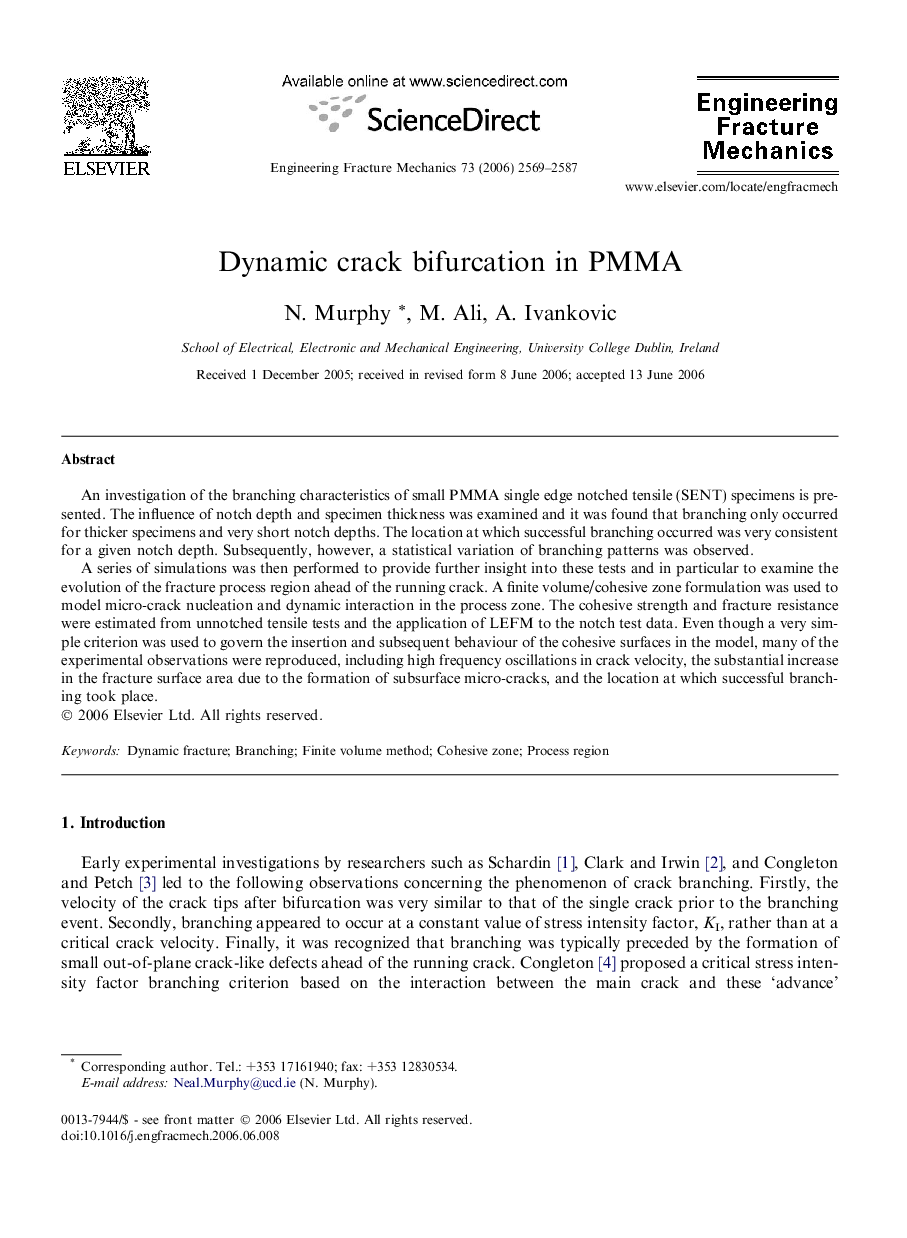| Article ID | Journal | Published Year | Pages | File Type |
|---|---|---|---|---|
| 768184 | Engineering Fracture Mechanics | 2006 | 19 Pages |
An investigation of the branching characteristics of small PMMA single edge notched tensile (SENT) specimens is presented. The influence of notch depth and specimen thickness was examined and it was found that branching only occurred for thicker specimens and very short notch depths. The location at which successful branching occurred was very consistent for a given notch depth. Subsequently, however, a statistical variation of branching patterns was observed.A series of simulations was then performed to provide further insight into these tests and in particular to examine the evolution of the fracture process region ahead of the running crack. A finite volume/cohesive zone formulation was used to model micro-crack nucleation and dynamic interaction in the process zone. The cohesive strength and fracture resistance were estimated from unnotched tensile tests and the application of LEFM to the notch test data. Even though a very simple criterion was used to govern the insertion and subsequent behaviour of the cohesive surfaces in the model, many of the experimental observations were reproduced, including high frequency oscillations in crack velocity, the substantial increase in the fracture surface area due to the formation of subsurface micro-cracks, and the location at which successful branching took place.
